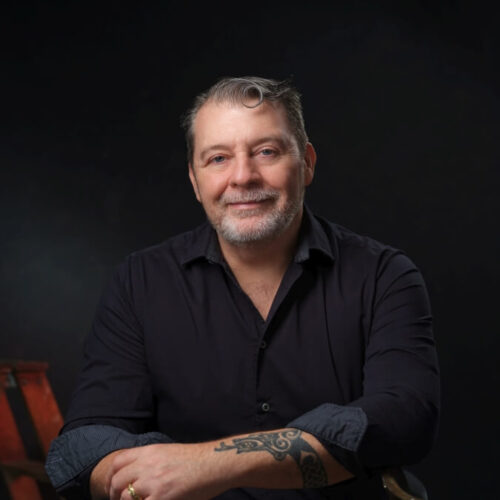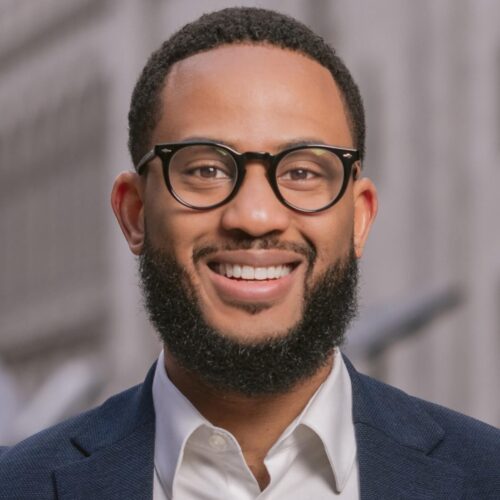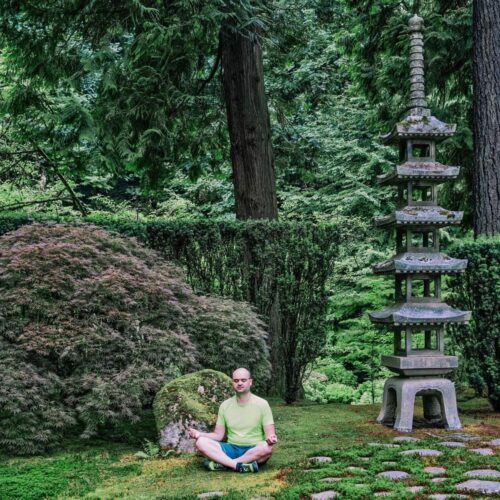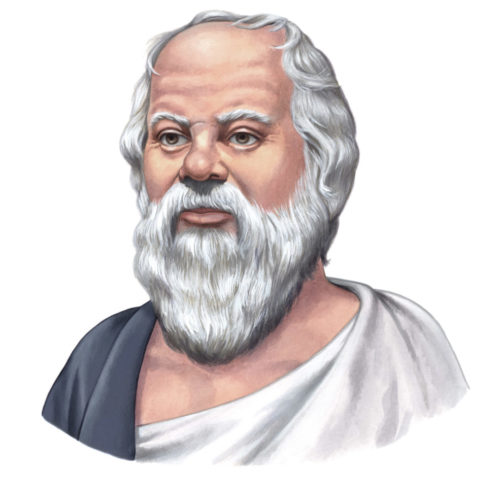Qatsi Director Godfrey Reggio: We Are in the Cyborg State!
Socrates / Podcasts
Posted on: November 11, 2013 / Last Modified: May 25, 2022
Podcast: Play in new window | Download | Embed
Subscribe: RSS
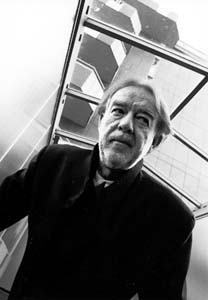
photo©ErlingMandelmann.ch
Godfrey Reggio is an inventor of a film style that creates poetic images of extraordinary emotional impact for audiences worldwide. Reggio is prominent in the film world for his Qatsi trilogy – Koyaanisqatsi: Live Out of Ballance, Powaqqatsi: Life in Transformation, and Naqoyqatsi: Life as War, essays of visual images and sound that chronicle the destructive impact of the modern world on the environment.
Thanks to my friend Tom Lowe, I was very fortunate to attend the premiere of Godfrey’s latest film – Visitors. In my view Visitors is one of those fundamentally important films that one simply has to watch. If you are fortunate enough to see the film the way I did – in glorious 4k and accompanied by the Toronto Symphony Orchestra live performance of Philip Glass’ original music score, then I guarantee it will be a movie experience like no other. And chances are that it will touch and move your heart even if it doesn’t do so for your head.
I would also suggest that you must go and watch at least Reggio’s first film – Koyaanisqatsi. [If you can also see Visitors it will be even better.] Otherwise, it is unlikely you will get many of the references we are discussing during the interview.
At any rate, during our 1-hour conversation with Godrey Reggio we cover a variety of interesting topics such as: why he is a refugee from another period who had the opportunity to live in the middle ages; the guiding principle behind his life and work; why and how he got interested in film-making; his Qatsi trilogy as another way of seeing the world and how it was adopted by popular culture such as MTV; Visitors and shooting both 4k and Black-and-White; the evolution of Reggio’s ideas and his take on the technological singularity…
My favorite quote that I will take away from this interview with Godfrey Reggio is:
It’s our behavior that determines the content of our mind. […] We become what we do; we become what we see; we become the routine that we are a part of…
As always you can listen to or download the audio file above or scroll down and watch the video interview in full. To show your support you can write a review on iTunes, make a direct donation, or become a patron on Patreon.
Who is Godfrey Reggio?
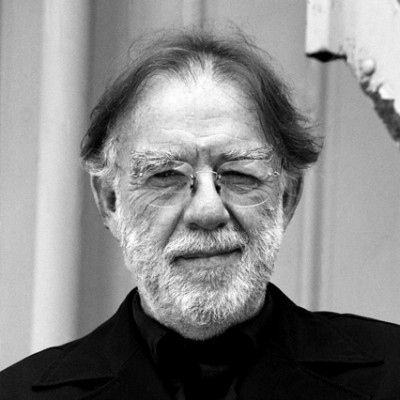 Born in New Orleans in 1940 and raised in Louisiana, Godfrey Reggio spent 14 years in a Roman Catholic religious order of men (the Christian Brothers) — living in a community, dedicated to prayer, study, and teaching. Based in New Mexico during the 1960s, Reggio taught school, lectured, and co-founded Young Citizens for Action, a community organization project on juvenile street gangs. Following this, Reggio co-founded La Clinica de la Gente, a Santa Fe community medical clinic, and La Gente, a community organizing project in the barrios of Santa Fe.
Born in New Orleans in 1940 and raised in Louisiana, Godfrey Reggio spent 14 years in a Roman Catholic religious order of men (the Christian Brothers) — living in a community, dedicated to prayer, study, and teaching. Based in New Mexico during the 1960s, Reggio taught school, lectured, and co-founded Young Citizens for Action, a community organization project on juvenile street gangs. Following this, Reggio co-founded La Clinica de la Gente, a Santa Fe community medical clinic, and La Gente, a community organizing project in the barrios of Santa Fe.
Based in New Mexico during the sixties, Reggio taught grade school, secondary school, and college. In 1963, he co-founded Young Citizens for Action, a community organization project that aided juvenile street gangs. Following this, Reggio co-founded La Clinica de la Gente, a facility that provided medical care to 12,000 community members in Santa Fe, and La Gente, a community organizing project in Northern New Mexico’s barrios. In 1972, he co-founded the Institute for Regional Education in Santa Fe, a non-profit foundation focused on media development, the arts, community organization, and research. In 1974 and 1975, with funding from the American Civil Liberties Union, Reggio co-organized a multi-media public interest campaign on the invasion of privacy and the use of technology to control behavior.
Koyaanisqatsi, Reggio’s debut as a film director and producer, is the first film of the Qatsi trilogy. The title is a Hopi Indian word meaning “life out of balance.” Created between 1975 and 1982, the film is an apocalyptic vision of the collision of two different worlds — urban life and technology versus the environment. The musical score was composed by Philip Glass.
Powaqqatsi, Reggio’s second film, conveys a humanist philosophy about the earth, the encroachment of technology on nature and ancient cultures, and the splendor that disappears as a result. The film focuses on the modern way of life and the concept of the Global Village, entwining the distinctive textures of ancient and Third World cultures. Powaqqatsi was co-written, co-produced, and directed by Reggio and composed by Philip Glass between 1985 and 1987.
In 1991 Reggio directed Anima Mundi, a film commissioned by Bulgari, the Italian jewelry company, for the World Wide Fund for Nature which used the film for its Biological Diversity Program. Accompanied by the music of Philip Glass, the twenty-eight minute Anima Mundi is a montage of intimate images of over seventy animal species that celebrate the magnificence and variety of the world’s fauna.
In 1993, Reggio was invited to develop a new school of exploration and production in the arts, technology, and mass media being founded by the Benetton company. Called Fabrica – Future, Presente, it opened in May 1995, in Treviso, Italy, just outside Venice. While serving as the initial director of the school through 1995, Reggio co-authored the 7-minute film Evidence which provides another point of view to observe the subtle but profound effects of modern living on children.
Naqoyqatsi, the final film of the QATSI trilogy, chronicles the most significant event of the last five thousand years: the transition from the natural milieu, old nature, to the “new” nature, the technological milieu…
Godfrey Reggio is a frequent lecturer on philosophy, technology, and film. He resides in Santa Fe, New Mexico.
Visitors Film Trailer:
Remember – no actors, no acting, no plot, no script, no dialogue…
Thirty years after Koyaanisqatsi, Godfrey Reggio – with the support of Philip Glass and Jon Kane – once again leapfrogs over earth-bound filmmakers and creates another stunning, wordless portrait of modern life. Presented by Steven Soderbergh in Black and White digital 4K projection, Visitors reveals humanity’s trance-like relationship with technology, which, when commandeered by extreme emotional states, produces massive effects far beyond the human species. The film is visceral, offering the audience an experience beyond information about the moment in which we live. Comprised of only seventy-four shots, Visitors takes viewers on a journey to the moon and back to confront them with themselves.

